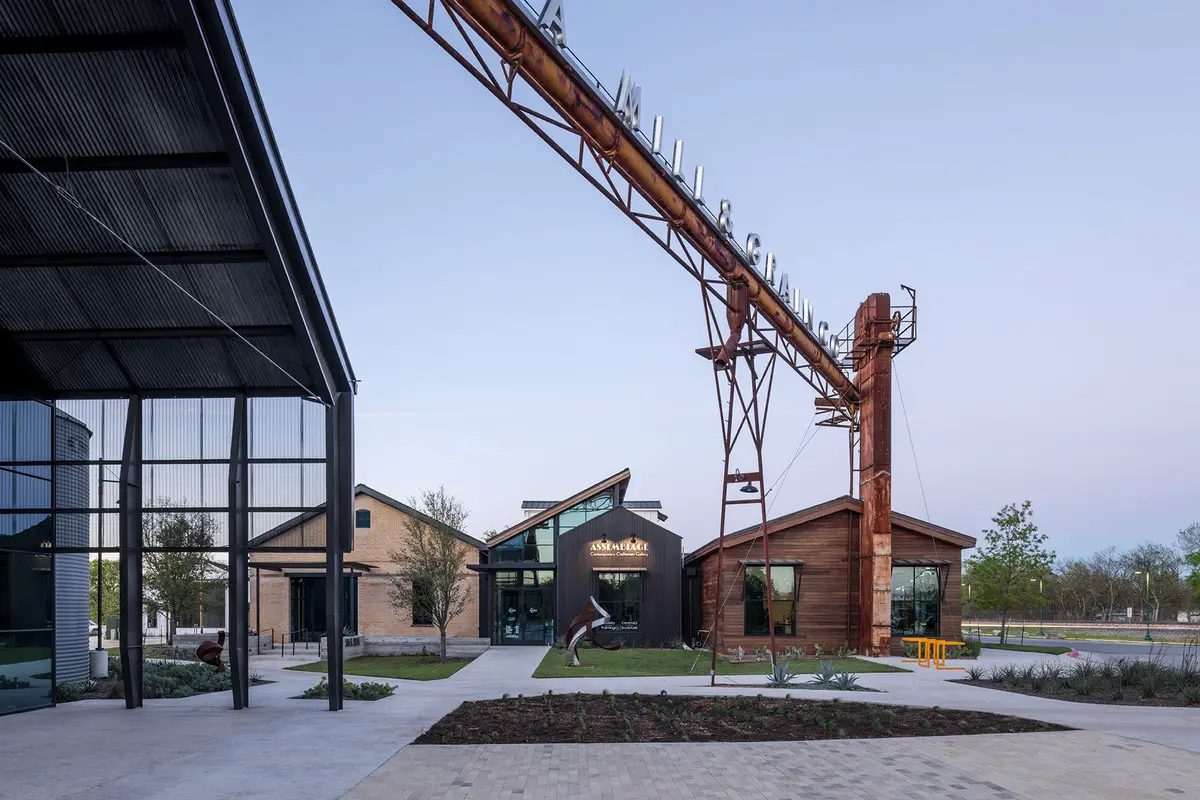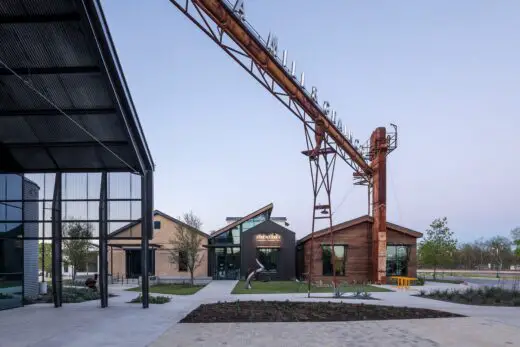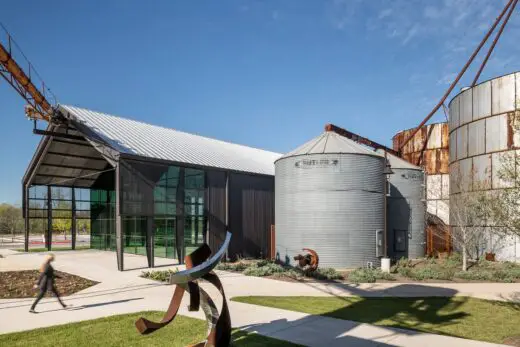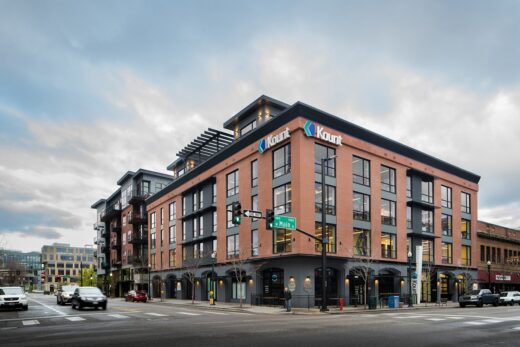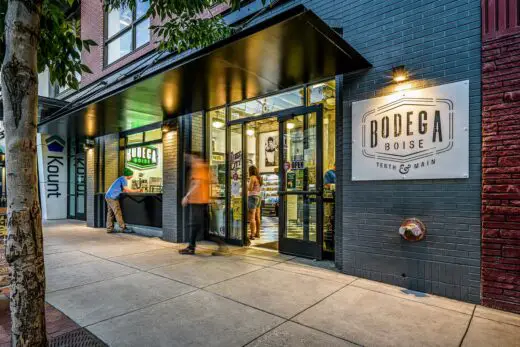Land Re-use and Climate Change, US old buildings refurbishment, American real estate refurb
Land (Re) Use and Climate Change: Breathing New Life into Old Buildings
June 13, 2022
By Ava Alltmont
The basic concept behind recycling is that it reuses an existing item. In some cases, the item is reused in its existing form: a water bottle is refilled again and again. In other cases, the item is adapted for a new use: a water bottle (well, many water bottles) is transformed into a pair of sneakers or yoga pants.
The water bottle’s new life in the latter example allows for a reimagining that not only keeps the item out of the landfill, but also provides economic benefits, such as supporting jobs (perhaps the wearer needs a new top to go with those pants and/or invests in classes at their local yoga studio). The seemingly simple act of repurposing something can have much broader, positive reverberations.
We can apply the same concept at a larger scale — with even greater impacts rippling out. When buildings are adapted for reuse, this can benefit both the companies and the communities involved by way of reducing environmental impacts, improving quality of life, and maintaining a sense of place.
As concerns for the environment continue to grow and as storefronts and offices remain empty as a result of the pandemic and changing consumer behaviors, the opportunity for adaptive reuse is profoundly felt across the American landscape.
What is adaptive reuse?
As more structures were demolished in favor of new builds in the postwar era, attention turned to conserving old buildings — along with the realization that there’s a finite amount of space and resources in the world.
The trend picked up steam in the 1970s: Notable designers including Carlo Scarpa and Herzog & de Meuron saw working with historic buildings an interesting challenge, and activists such as writer Jane Jacobs fought against replacing urban communities with new high rises.
Today we recognize a variety of strategies as forms of adaptive reuse: renovation, modernization, historic preservation, infrastructure reuse, and additions, to name a few. And within those categories are even more varieties of adaptive reuse.
For some famous examples of adaptive reuse, look no further than the High Line in New York City, which transformed a former New York Central Railroad spur into a park, greenway, and rail trail. Or the Tate Modern in London, which reimagined an old oil-fired power station into a contemporary art museum.
Adapting an existing building — whether to modernize it, change its use, or otherwise — requires a multidisciplinary team to ensure all old and new systems and structural aspects can talk with one another and work in tandem. Our own teams of varying expertise know to cross-reference one another’s work to ensure an adaptive reuse project pulls the past and the future together seamlessly.
Benefits of adaptive reuse
Opting to reuse existing structures, rather than build new ones, has myriad benefits — but we’ll focus on how it positively affects three areas in particular: the environment, quality of life, and sense of place.
By its very nature, adaptive reuse avoids unnecessary sprawl, which is a major contributor to greenhouse gas emissions. New buildings placed on previously unused land remove vegetation that would otherwise help filter out pollutants. It necessitates the use of new building materials, and it likely requires users to drive farther if the building is not located near their homes or other frequent destinations. According to The Brookings Institution, the U.S. is a world leader in both building-related energy consumption and vehicle miles traveled per capita.
Even when sprawl isn’t involved, knocking down old buildings and starting new has environmental costs: Demolition and construction make up 25% of the solid waste that goes to U.S. landfills each year. When a building comes down, the energy embedded in that structure is also lost, including what was expended in the original production and transportation of the materials, along with any human power used in its construction and upkeep.
But adaptively reusing a building generally saves about 50-75% of embodied carbon, compared to new construction. It takes between 20 and 30 years for the majority of building types in different climates to compensate for the initial carbon impacts from construction, according to research from the Preservation Green Lab of the National Trust for Historic Preservation. The same study found that environmental savings from the adaptive reuse of buildings can be up to 46% over new construction when comparing buildings with the same energy performance level.
Another major benefit relates to the quality of life for those who use the building or live nearby. For example, reusing buildings that are already in the heart of the community likely make the area more walkable, bikeable, or public transportation-friendly — all of which help with overall well-being. And when convenience is a major driver in how consumers make decisions, keeping businesses in a central location is more attractive to individuals.
Building reuse can also create jobs, which is clearly ideal for a community’s quality of life. The Preservation Green Lab study found that historic rehabilitation has created two million jobs over the course of 32 years, generating $90 billion in private investment. It pointed to other studies that found residential rehabilitation creates 50% more jobs than new construction.
Lasty, building reuse often helps maintain a community’s sense of place. Older structures are often the historians of the built environment, giving individuals not only a look into the past, but a feeling that they couldn’t be anywhere else in the world. When older buildings are knocked down, the community loses a piece of its past and — in a way — its sense of self.
Why now — and why you
If you consider the trends associated with the above benefits, it’s an ideal time to consider adaptive reuse. More and more consumers — and businesses — are setting their sights on ways to stop or slow the effects of climate change; there’s a renewed focus on wellbeing (especially amid a global pandemic); and empty buildings are certainly available. It also plays into the “15-minute city” concept, which has grown in popularity: People want to live in areas where their needs are easily accessible.
But the pandemic also presented companies with another opportunity: Empty buildings. Unfortunately, many businesses were unable to contend with restrictions and had to close their doors, or they opted to allow employees to continue working from home and chose not to renew leases on office spaces. To some extent, this began prior to the pandemic, as shopping malls in particular were hit hard by changing consumer behaviors.
Malls are, in fact, a great example of spaces that can easily be reimagined for the region’s existing culture, rather than demolished. As Brian Andrus, head of the Florida Gulf Coast Commercial Association of Realtors, explained to Architectural Digest, “You have to establish what that area truly needs and truly wants,” before re-tenanting or redeveloping. Some communities may want a grocery anchor, while other towns would support a big box store. A community college in Austin, Texas, purchased a mall and turned it into classrooms, office space, and a library; elsewhere, malls have been repurposed into living facilities.
In city or town centers, the concept of adaptive reuse is frequently referred to as re-urbanism, a movement that advocates for the redevelopment of old buildings — versus sprawl — to facilitate a more economically and environmentally sustainable city, as well as to establish a strong sense of community. The Preservation Green Lab, under the National Trust for Historic Preservation, released a 2014 report that found cities with both older and smaller buildings had strong local economies, provided more affordable places for startups, housed a more residential age diversity, and were more walkable — compared with cities that had a greater share of newer, larger buildings.
There’s an enormous opportunity for companies of any size to reuse existing structures, which also benefits the brand: According to Edelman’s 2022 Trust Barometer, business stakeholders — including consumers, employees, investors, and others — want organizations to be held accountable for societal leadership. That includes leadership on issues such as climate change and quality of life.
And if we look back at the cyclical nature of recycling, it’s easy to see the business imperative in adaptive reuse. If opting to reimagine an existing building is good for the environment, quality of life, and a community’s sense of place, then it will attract more talent, residents, and visitors to the city, thus improving the local economy. It’s a case of reduce, reuse, recycle — and revitalize.
Land Re-use and Climate Change information / images received from Cushing Terrell
A recent architectural article by Cushing Terrell on e-architect:
April 1, 2022
Data-Informed Design for User Experience at Work
by Sandi Rudy, RID, LEED ID+C and Jennifer Moore, NCIDQ
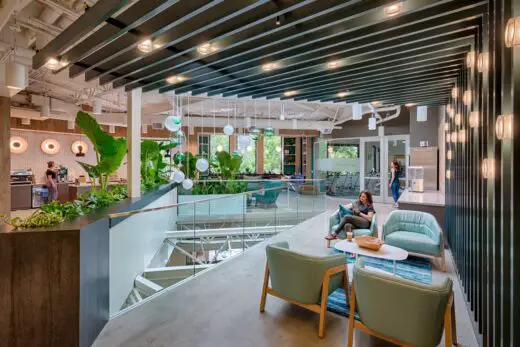
photo : Marco Zecchin
Data-Informed Design for User Experience at Work
Comments on this Land (Re) Use and Climate Change: Breathing New Life into Old Buildings article by Cushing Terrell are welcome.
Cushing Terrell
Cushing Terrell ATX Office
Architecture: Cushing Terrell
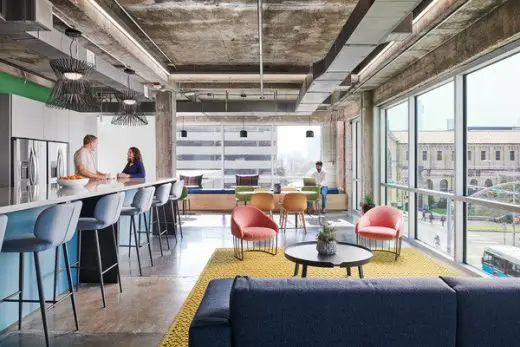
photograph : Peter Molick
Cushing Terrell ATX Office in Austin, Texas
Location: Austin, Texas, USA
Architecture in the USA
A US building design by Cushing Terrell Architects on e-architect:
Stockman Bank Missoula Downtown, Montana
Contemporary US Buildings
, Texas
Design: Miró Rivera Architects
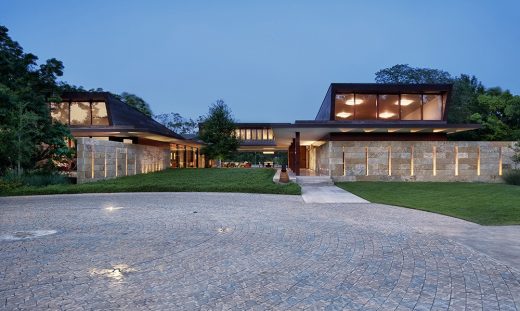
photograph : Paul Finkel, Piston Design
Residence 1446 in Austin
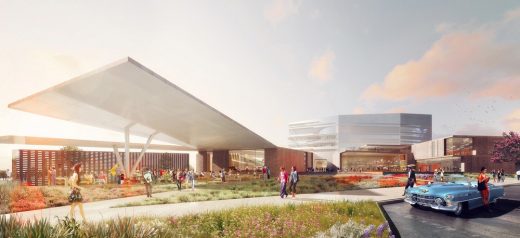
image from architect
Buddy Holly Hall of Performing Arts and Sciences in Texas
American Architecture Design – chronological list
Comments / photos for the Land Re-use and Climate Change architectural article by Ava Alltmont page welcome

